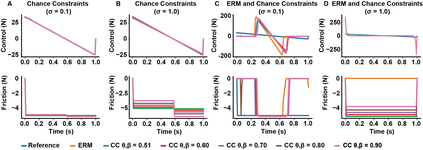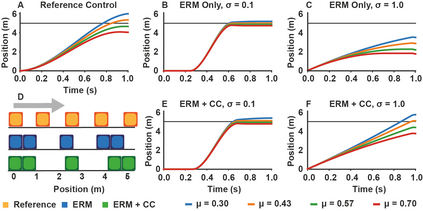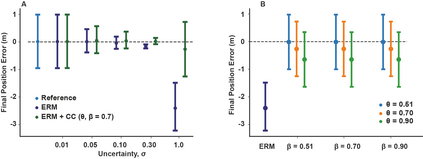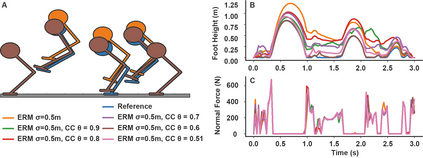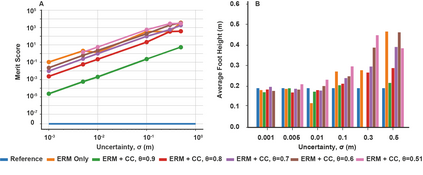As robots move from the laboratory into the real world, motion planning will need to account for model uncertainty and risk. For robot motions involving intermittent contact, planning for uncertainty in contact is especially important, as failure to successfully make and maintain contact can be catastrophic. Here, we model uncertainty in terrain geometry and friction characteristics, and combine a risk-sensitive objective with chance constraints to provide a trade-off between robustness to uncertainty and constraint satisfaction with an arbitrarily high feasibility guarantee. We evaluate our approach in two simple examples: a push-block system for benchmarking and a single-legged hopper. We demonstrate that chance constraints alone produce trajectories similar to those produced using strict complementarity constraints; however, when equipped with a robust objective, we show the chance constraints can mediate a trade-off between robustness to uncertainty and strict constraint satisfaction. Thus, our study may represent an important step towards reasoning about contact uncertainty in motion planning.
翻译:当机器人从实验室进入现实世界时,运动规划需要考虑到模型的不确定性和风险。对于涉及间歇接触的机器人动作,规划接触中的不确定性特别重要,因为无法成功进行和保持接触可能是灾难性的。在这里,我们模拟地形几何特征和摩擦特征的不确定性,并将风险敏感目标与机会限制结合起来,以便在强力与不确定性之间的权衡和对任意高可行性保证的满意度的制约之间作出权衡。我们用两个简单的例子来评估我们的方法:基准衡量的推力阻力系统和单腿直升机。我们证明,仅机会限制就会产生类似于使用严格的互补性限制产生的轨迹;然而,如果具备强有力的目标,我们则展示机会限制可以在强力与不确定性和严格约束性满意度之间的权衡。因此,我们的研究可能代表了对动态规划中的接触不确定性进行推论的一个重要步骤。


